Every day, coaches work relentlessly on the training ground to translate their philosophies, principles and ideas into real life. Whether the style used to create chances is patient or direct, if the aim is to use overloads and isolation or rotations, the goal is the same for every team: create space in dangerous goalscoring opportunities. Some of these methods of chance creation can take a long time to perfect on the training pitch or can be reliant on many different pieces of the puzzle.
In a sport where space can be so limited, one of the most effective tools for dragging a player out of position is the use of a disguised pass. A disguised pass can alter the body orientation of defenders and drag players out of position only through the small movement of a player’s body.
This tactical analysis will be in the form of a tactical theory to explain why the disguised pass is such an effective skill to have. The analysis will show the different ways a disguised pass could be utilised, as well as key examples of the tactics in which they have been used and proven so effective.
What is a disguised pass?
In order to understand the benefits and potential of a disguised pass, it is necessary to be able to define it. Disguise is defined as giving yourself a different appearance to conceal your identity, which in football terms relates to appearing to pass in one direction when the intention is to pass the ball someplace else.
A player always has the angles ahead of them available to pass to, as depicted by the image underneath. When a player faces the opposition goal, they can pass to the left and right, but wider angles are not available. In order to access wider angles, a player must alter their angle of approach to the ball or alter the position of the ball.
For optimal balance and precision, the player on the ball should place their standing foot next to the ball, which in turn blocks the possibility of a pass at an acute angle. The disguised pass becomes an option once the player can move the obstacle (standing foot) out of the way of the passing lane. Once the pass becomes available, it means that the player is off balance due to the standing foot’s placement behind the ball and so the pass becomes harder to execute, with it being played with less power and precision. This means these kinds of passes can be hard to pull off, but the benefit of the disguise usually means the path to the receiver is clearer than usual.
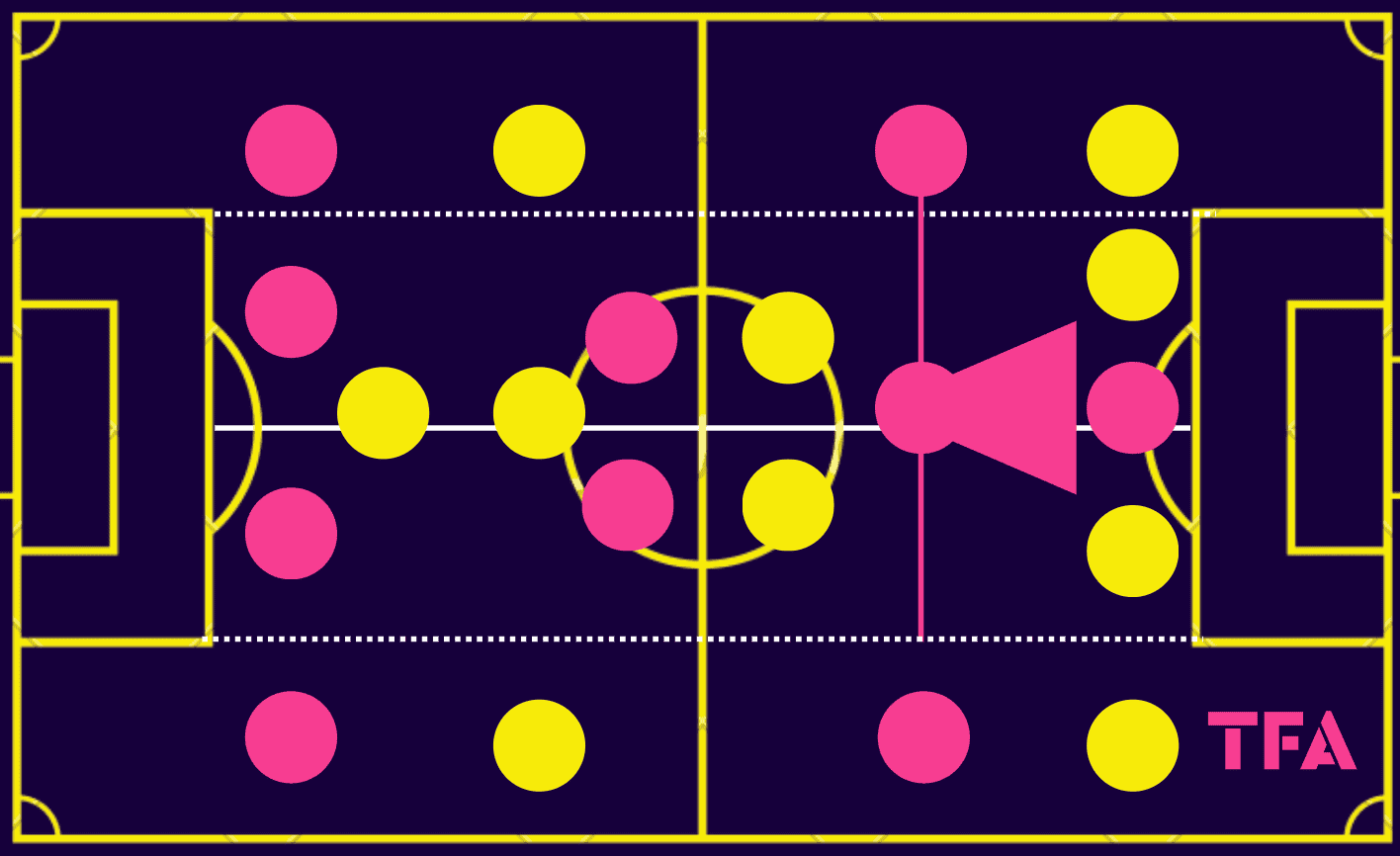
The diagram above also displays two vertical lines from the ball player. The opposite side to the player’s stronger foot shows the added angle at which a disguised pass can be played, as long as the standing foot is not in line with the ball. This means that a right-footed player can have the added range of playing the ball to the wide left without altering their body shape.
Disguise in deep areas
As mentioned earlier, disguised passes allow players to create space in forward areas without the need for many combinations. In deeper areas, defenders have a ‘blank canvas’ where they can play the ball anywhere they like. Central defenders always have the option of playing the pass to either the left or the right, whilst there is lots of space ahead of them to find a pass due to their deep positions.
This is most evident when defenders attempt to progress the ball through the thirds inside their own half, where they have almost every teammate ahead of them in their view, and as a result have lots of different targets to play the ball to, meaning there is lots of potential to lure defenders out of position through their body shape. Below we can see Chelsea’s Thiago Silva on the ball, although every passing option is cut off by a Nottingham Forest player.
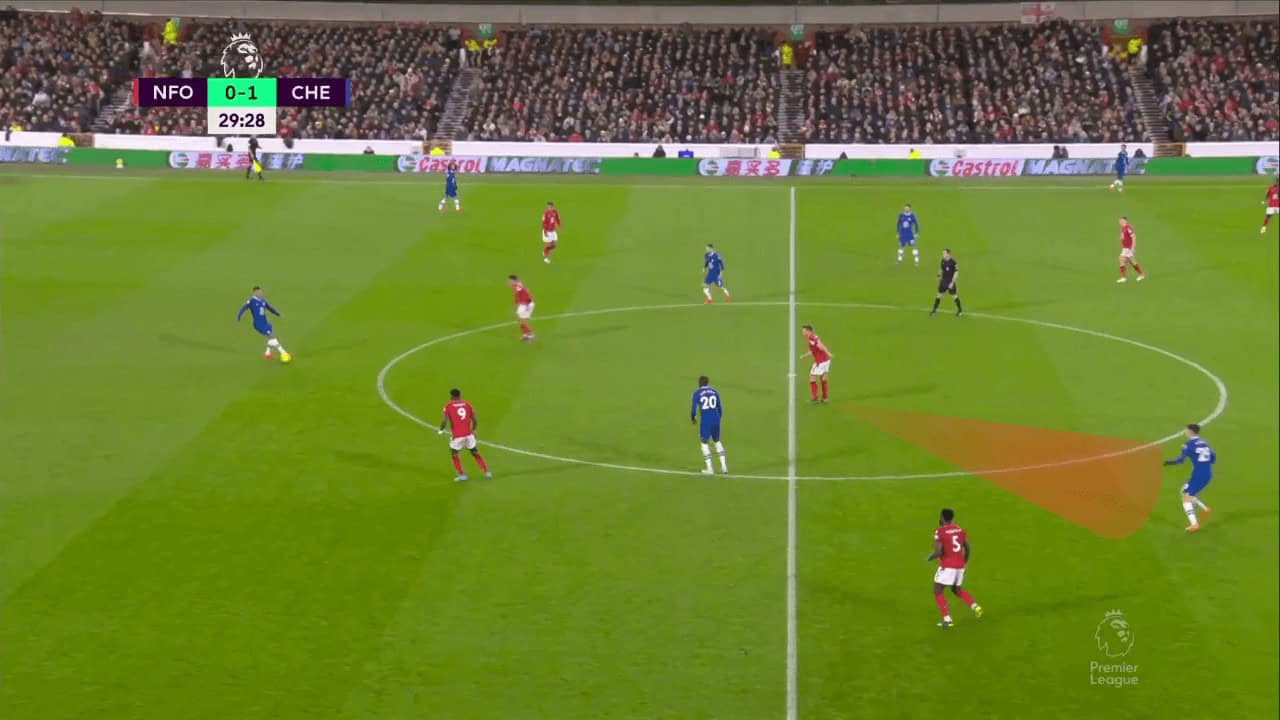
Forest’s midblock allows Silva time on the ball to identify his next pass and lure a defensive player to vacate their position. We can see this take place when Silva opens his body to the right side of the pitch. From this position, it seems as if the only possible options are Zakaria who is available, or to the right back out of shot who is probably being cut off.
However, while the opening up of his body lures the Forest midfielder to shuffle across to the right side of the pitch, Silva uses that movement to play the pass into the direction where the Forest midfielder started, which was in the centre of the pitch. In this particular case, the use of disguise on the pass has allowed Chelsea to progress the ball into the centre of the pitch, from where they can attack Forest in favourable conditions.
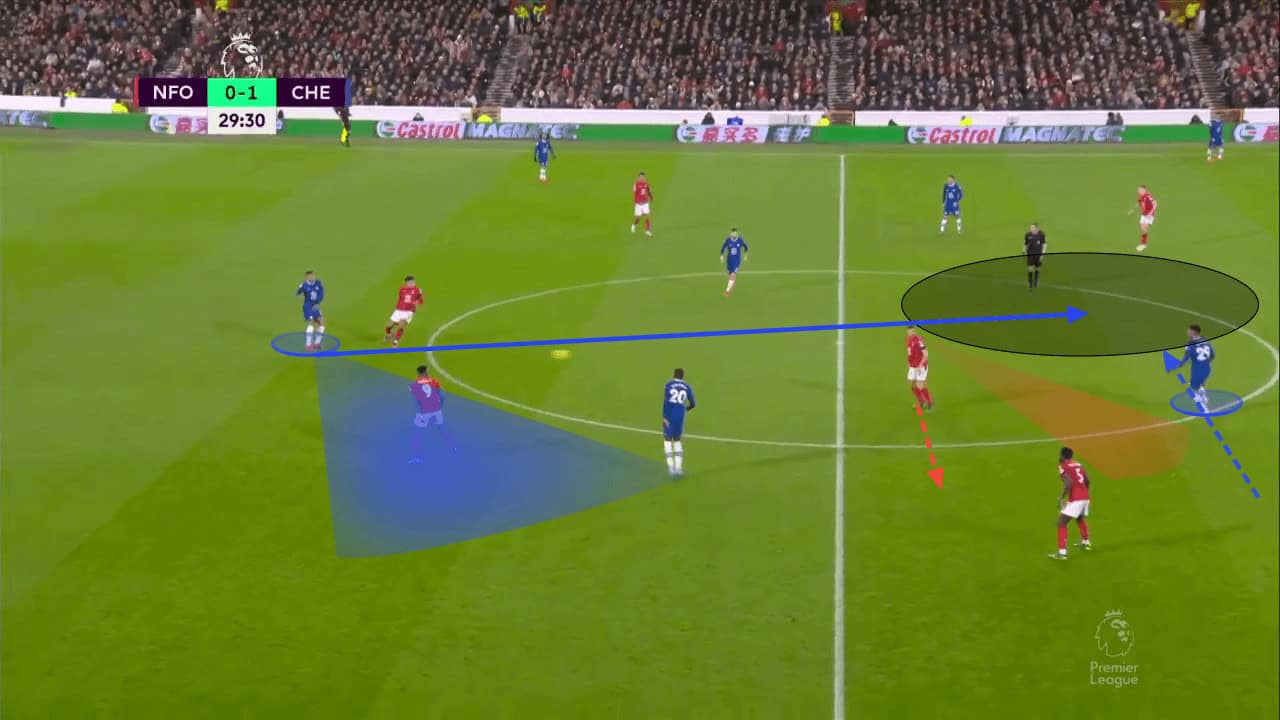
Disguised passes can also be used as options for progressing the ball in further attacking areas, as a means to progressing the ball into the final third when up against a sturdy defence. Barcelona’s Sergio Busquets is arguably one of the best passers of the ball when disguising his actions.
His awareness and ability to quickly shift the ball allows him to regularly locate and pass the ball to teammates in attacking areas when the passing lane seems like it is cut off. As with ball striking, longer legs help a player strike through a ball with more power, which also applies to passing. Disguised passes rely on the player’s ability to pass a ball whilst off-balance and facing the wrong way. The fact that Sergio Busquets’ legs are longer means he can pass the ball with an adequate amount of power even when he reaches for the ball.
The image below shows how he opens up his body to the right, before reversing the ball into the centre of the pitch. As his body rotates, the Villareal defender attempts to anticipate the pass out wide, but in terms vacates his position defending the centre of the pitch. This can be likened to luring a guard away from his post, leaving the most vulnerable area in the greatest danger due to the natural want of anticipating something before it becomes an even bigger problem.
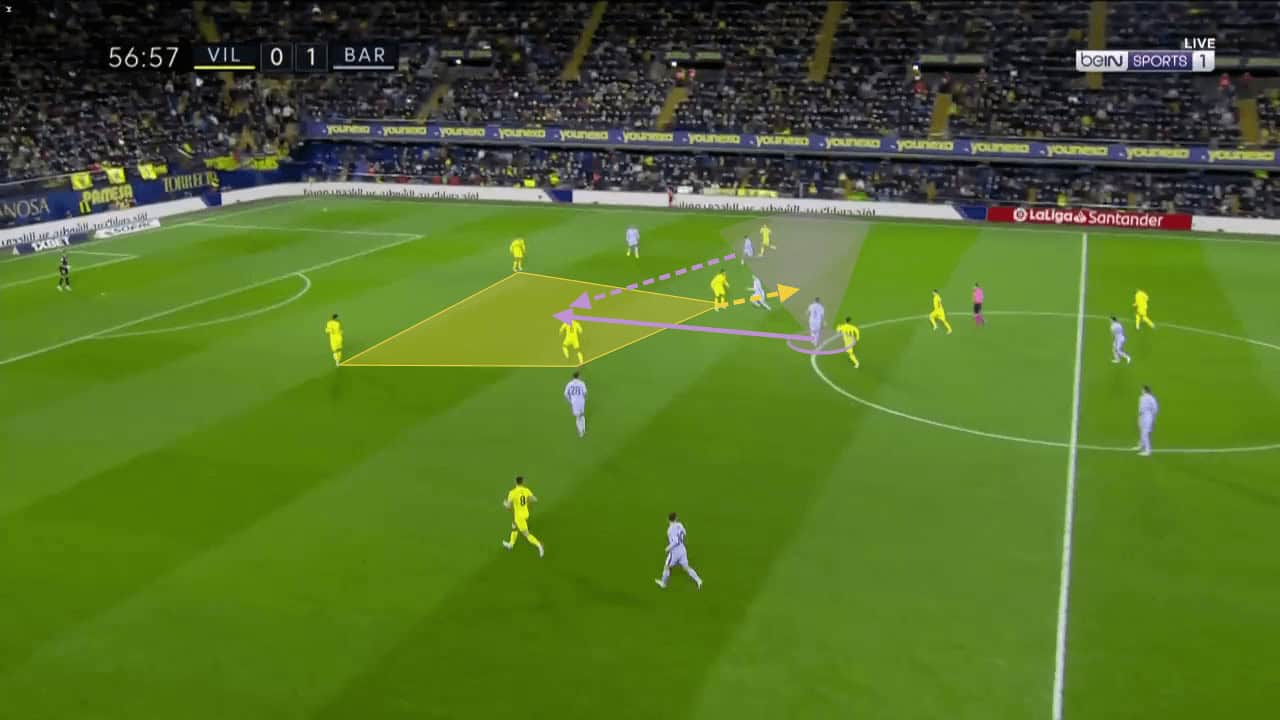
Using disguise to create space
In wide areas, space is more constricted than usual, with one side always being out of bounds, making life much more predictable for the defensive sides. However, as with the previous examples, defenders’ ambition of anticipating danger usually leaves them vacating the more dangerous positions. The example below shows how Aston Villa’s Kamara only has one passing option to his left, whilst he is surrounded by Arsenal shirts.
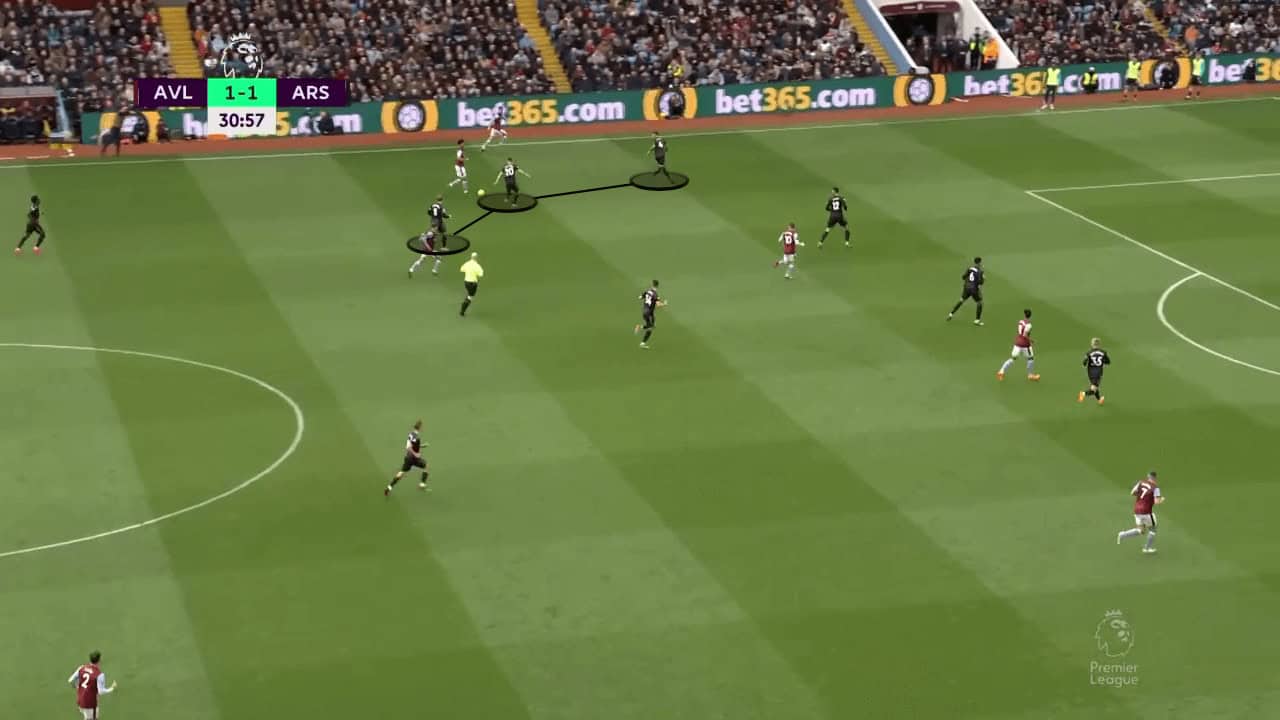
In the next frame, we can see Kamara rotate his body to directly face his teammate, making Ben White think that the pass will be played into the winger’s feet instantly. However, that was not the case, instead of passing the ball to his feet, Kamara recognised the space just opened by the right back jumping from his position.
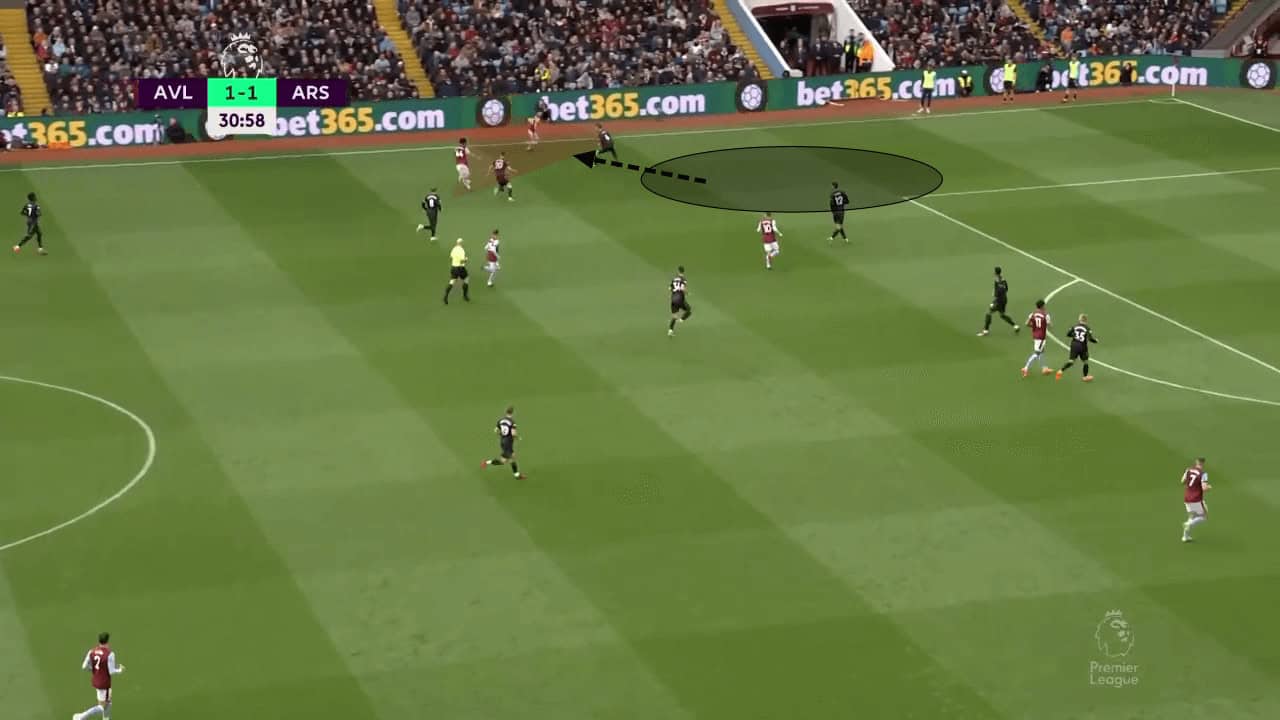
The jump from the defender then becomes a trigger for the attacking player to attack the space vacated, which then is passed into. This scenario led to a goal scored against the current Premier League leaders.
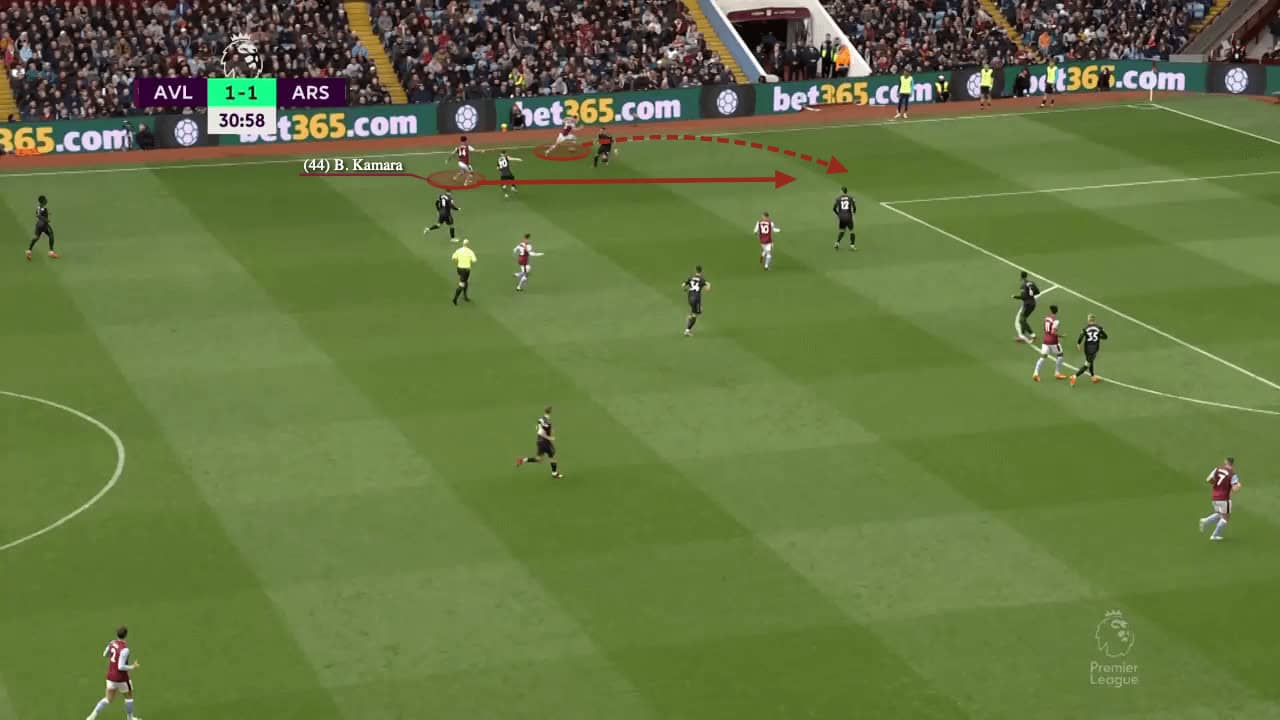
So far, we have only explored the use of disguised passes when used by players who play on their preferred foot side. When a player for example is right-footed and on the right side of the pitch, the goal can become easier to defend. It is only possible to deliver the ball when directly facing the box. However, if the pass wants to be disguised, a player must be facing the touchline, where they face the wide player and wait for the jump to pass into the space vacated.
Whilst this method can be effective, there is no immediate danger to defending teams when the ball carrier is facing away from the goal.
When a player plays on the opposite side to their strong foot, more problems arise. For example, if a right-footed player plays on the left wing, their angles can be more open on their left side. For a player to take advantage of their angles to their left, the goal should be on their left-hand side. In order to force the goal to be on your left, you must be facing inwards to the goal. When you face the goal with your opposite foot, the angles open up, meaning there are plenty more favourable options. A player can shoot at goal, deliver a cross, or play a disguised pass into the centre of the box. Defenders have so many options to worry about, they can’t predict what will happen and therefore are less likely to intercept anything.
The image below shows Mesut Ozil looking as if he will deliver an in-swinging cross to the penalty area. When the defender’s priority becomes to stop the cross at all costs, the space opens up behind the defender, where Ozil can play a disguised pass into the space, towards the goal in a favourable position.
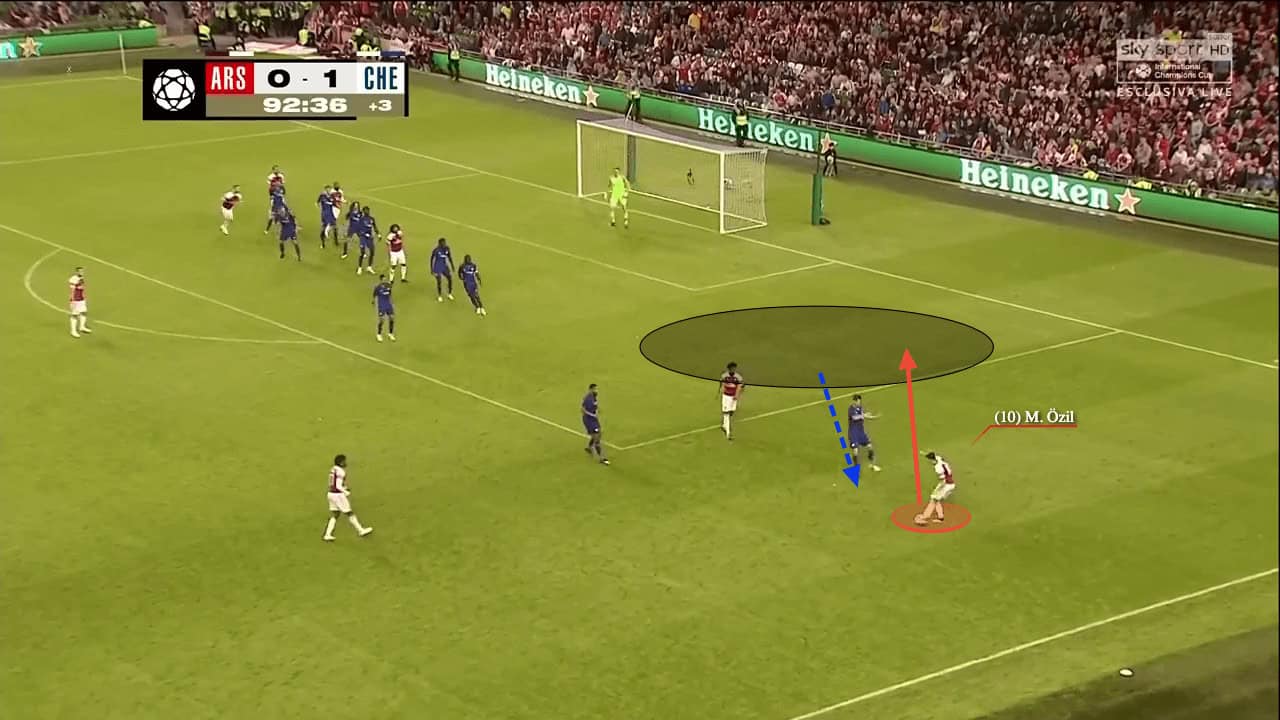
Simply put, being on your stronger side means the pass moves slightly away from the goal when facing in-to-out, whilst it moves towards the goal when you play on your weaker side facing out-to-in, and these slightest advantages are the most important when attacking the box. Any sort of separation and an opponent can hurt the back of the net.
Below we can see an example of a player on the side opposite to their strong foot disguising a pass which moves towards the goal. As Odegaard cuts inside, the whole pitch becomes available to him. The black area shows where Odegaard is facing, which puts the three defenders further away from the ball in a situation where they expect to deal with the ball, ready to run back to their own goal, whilst the two defenders closest to the ball assume their job is done and slow down their pace. The two closest defenders are square on, meaning they won’t be able to track any runners as they’d be in the wrong position to do so.
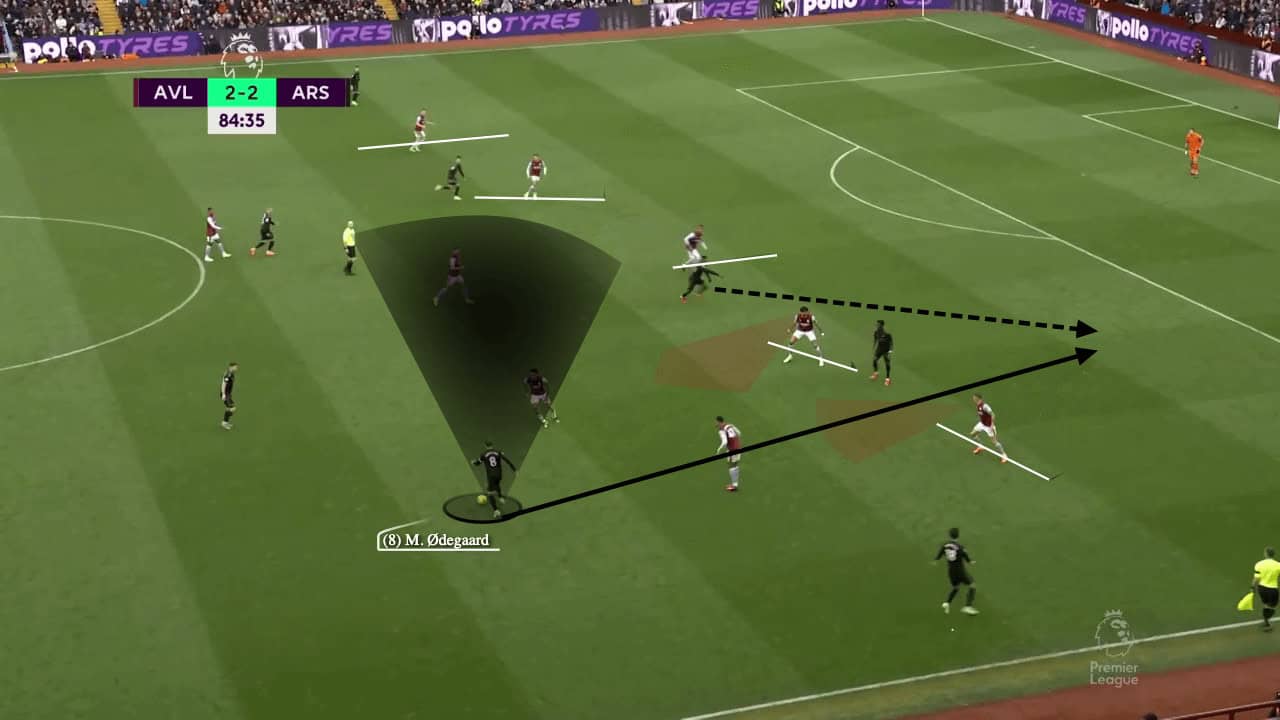
After the pass is made, we can see the players closest to the ball who have barely moved anywhere, whilst the two further players are having to track the runs. This shows that defenders not in the usual eyesight of an attacker aren’t always ready to defend, meaning that the disguise passes to where the ball just came from are usually a good way to attack and create space.
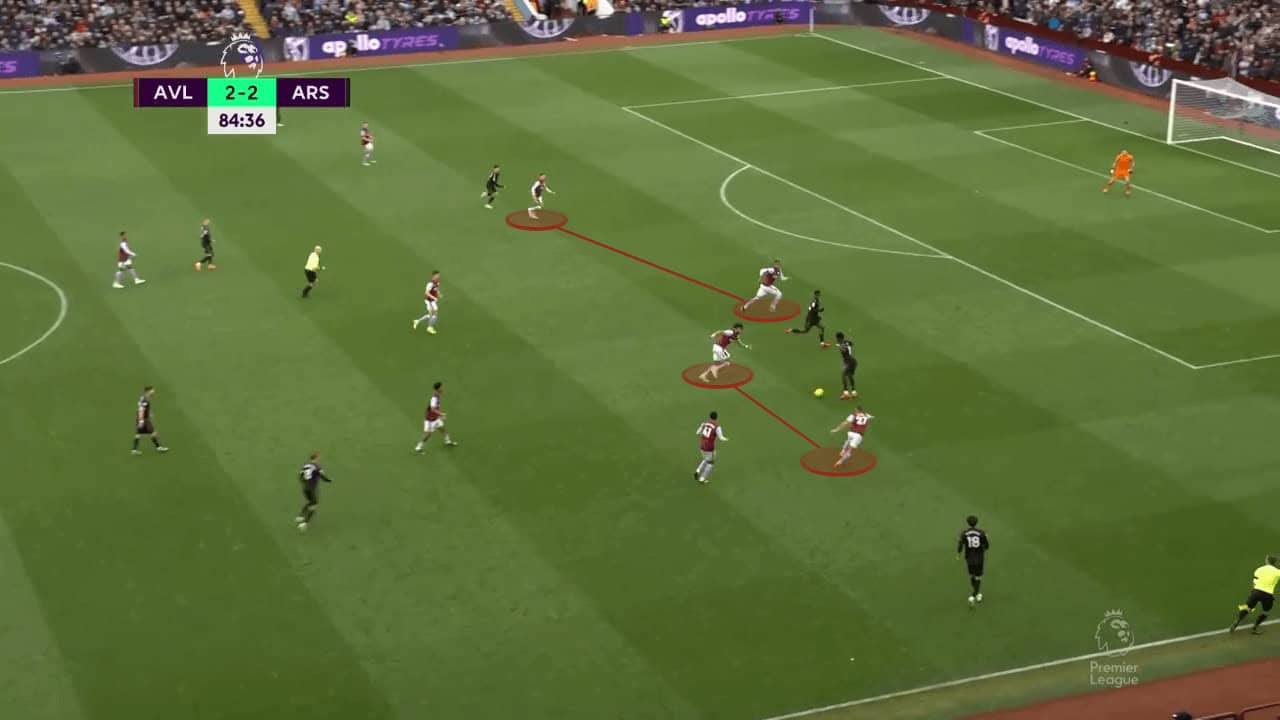
Conclusion
This tactical theory has demonstrated the numerous ways in which disguised passes can be effective. The main use of disguised passes is to create space where it seems like no space is available. The best ‘disguised passers’ keep as many options open as possible, before identifying a potential opening should they be able to lure the defender away from there.
Taking advantage of defenders’ eagerness to anticipate passes allows the best disguise passers to create openings in a back line where everyone seems settled. Disguise passes have an underappreciated place in the sport, where space can be created through a twist of the hips and be as effective a method as a systematic method of chance creation can be. Due to the nature of attacking unexpecting defenders, these runs don’t have to be made by outlets as long as the timing is right, and the fact that anyone can get on the end of this makes it even more unpredictable to defend against.
If two players can begin to form an understanding of the different triggers when to play the pass and attack the space, it could prove to be a more reliable method of creating chances than most that are used more commonly. Coaches just have to ensure that the attacking players should always expect the ball played into them, even if they might seem like they are out of sight.

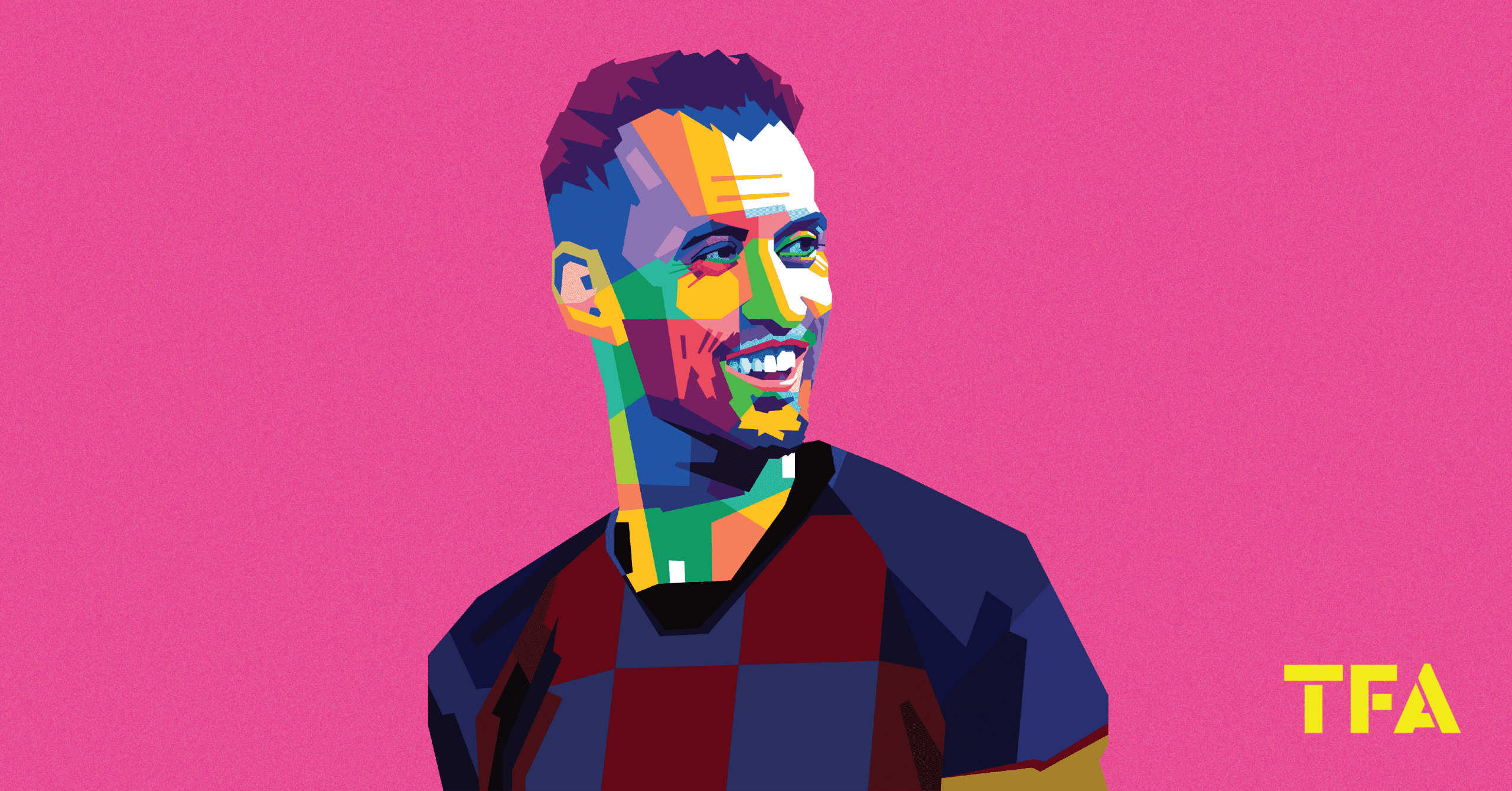




Comments